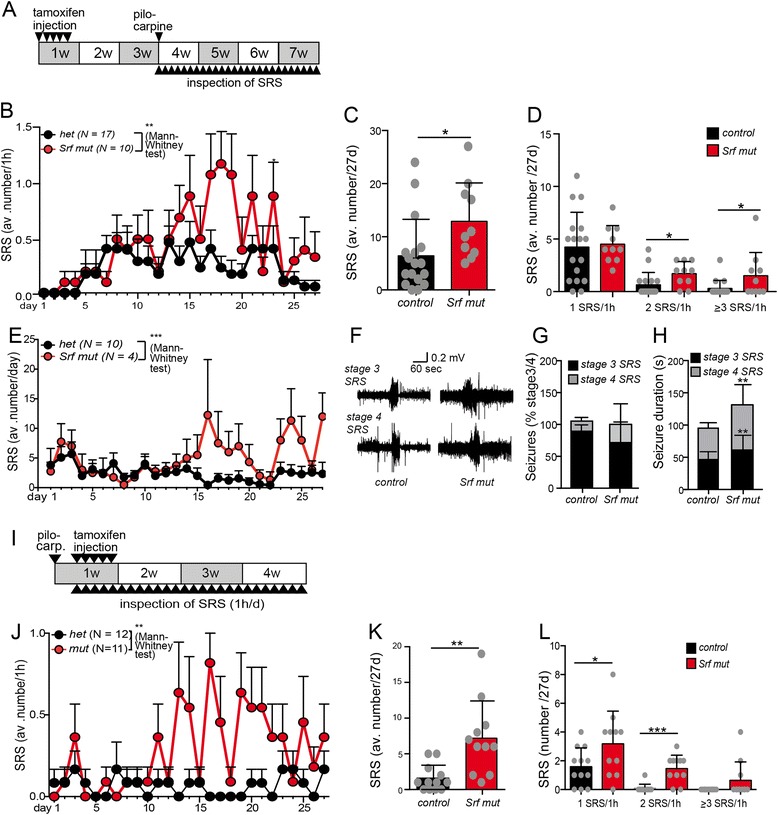Fig. 4.

Spontaneous seizure frequency is elevated in SRF deficient mice. a Mice were tamoxifen injected and 14 days later SE was induced with pilocarpine. Subsequently, SRS occurrence was quantified by visual inspection of cages for 1 h/day (b-d) over 27 days. b Compared to heterozygous mice (black line), SRF deficient mice (red line) had significantly more SRS at several days throughout the 27 days observation period. c The total SRS number was doubled in Srf mutant compared to heterozygous mice over the 27 days. d In the daily 1 h observation period, there were significantly more SRF deficient mice with two (2 SRS/1 h) or three and more (≥3 SRS/1 h) SRS compared to heterozygous mice. e Similar to visual inspection (b), EEG recordings over 24 h/day for 27 days showed increased SRS numbers in SRF deficient mice. f Typical EEG traces of a stage 4 and 5 SRS in a control and Srf mutant animal. No obvious changes in SRS intensity were observed. g Heterozygous and Srf mutant animals had a comparable frequency of stage 4 and stage 5 SRS. h Upon SRF ablation, single SRS duration was significantly longer than in control animals. i In experiments to panels (J-L), the order of tamoxifen and pilocarpine injection was reversed compared to (b-h). After pilocarpine injection, SRS occurrence was observed for 1 h/day for 27 days. j SRF deficient mice had significantly more SRS at several days in the observation period. k The total SRS number/27 days was three- to four-fold elevated upon SRF ablation. l SRF deficiency resulted in more mice experiencing two or three and more SRS within the 1 h observation period. Data are represented as mean ± SD. Number of animals are indicated or individual animals are labeled with grey circles
